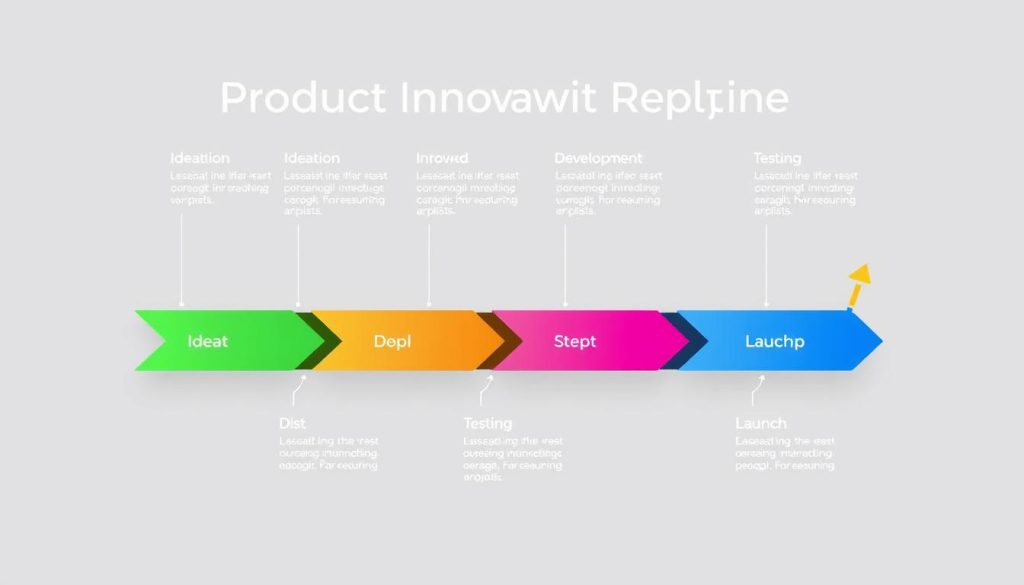
Have you ever felt the sting of losing a client to a rival? I have, and it’s a gut-wrenching experience that leaves you questioning your business strategy. But what if I told you there’s a way to turn the tables and rise above the competition?
In today’s fast-paced business world, staying ahead is no longer optional—it’s essential. Whether you’re a startup founder or a seasoned CEO, understanding how to outmanoeuvre your rivals is the key to success. This article will guide you through the process of gaining a competitive advantage through smart market analysis and effective business strategies.
We’ll explore how to identify your unique strengths, analyse your competitors’ weaknesses, and leverage this knowledge to carve out your own space in the market. From crafting a compelling value proposition to optimising your operations, we’ll cover all the bases to help you stay one step ahead.
So, are you ready to unlock the secrets that will propel your business to new heights? Let’s dive in and discover how you can transform your market position and leave your competitors in the dust.
Key Takeaways
- Identify your unique value proposition to stand out in the market
- Conduct thorough competitor analysis to spot opportunities
- Use digital tools for in-depth market analysis
- Develop a customer-centric approach to build loyalty
- Implement data-driven decision making for strategic advantage
- Focus on continuous innovation to stay ahead of the curve
Understanding Market Positioning and Competitive Advantage
In today’s fiercely competitive business landscape, grasping market positioning and gaining a competitive edge are vital for success. This section explores key strategies to help you stand out from the crowd and secure your place in the market.
Identifying Your Unique Value Proposition
Your unique value proposition (UVP) is the cornerstone of effective market positioning. It’s what sets you apart from competitors and attracts customers to your brand. To identify your UVP, consider these questions:
- What specific problem does your product or service solve?
- How does your product or service differ from competitors?
- What unique benefits do you provide to customers?

Mapping Your Position in the Market
Once you’ve defined your UVP, it’s vital to map your position in the market. This process involves analysing your competitors and identifying where you fit in relation to them. Consider factors such as price, quality, and target audience to create a clear picture of your market positioning.
Evaluating Current Market Share
Understanding your current market share is essential for measuring success and planning future growth. Here’s a simple breakdown of market share in the UK smartphone industry:
| Brand | Market Share (%) |
|---|---|
| Apple | 51.4 |
| Samsung | 28.9 |
| Huawei | 6.4 |
| Others | 13.3 |
By regularly evaluating your market share, you can track progress, identify trends, and adjust your strategies. Remember, market positioning is an ongoing process that requires constant refinement to stay ahead of the competition.
Analyse Competitor Strategies
In today’s fiercely competitive environment, businesses must excel in analysing competitor strategies. This endeavour entails gathering vital insights, assessing performance, and identifying market gaps.
Conducting Competitive Intelligence Research
At the core of strategic analysis lies competitive intelligence research. It encompasses the collection and analysis of data regarding rivals’ offerings, pricing, and marketing strategies. Employ online tools, industry reports, and customer feedback to construct a detailed understanding of competitors’ capabilities and vulnerabilities.

Benchmarking Performance Metrics
Performance benchmarking enables the evaluation of your company’s achievements against industry benchmarks. Concentrate on critical metrics such as market share, customer satisfaction, and revenue expansion. Establish a scorecard to monitor these metrics consistently:
| Metric | Your Company | Industry Average |
|---|---|---|
| Market Share | 15% | 12% |
| Customer Satisfaction | 4.2/5 | 3.8/5 |
| Revenue Growth | 8% | 6% |
Identifying Strategic Gaps and Opportunities
By integrating competitive intelligence with performance benchmarking, you can reveal strategic gaps in the market. Seek out areas where competitors falter or customer demands remain unfulfilled. These shortcomings present unparalleled opportunities for innovation and expansion within your business strategy.
“The best way to predict the future is to create it.” – Peter Drucker
Strategic analysis is a continuous endeavour. Regularly refresh your competitive intelligence, enhance your benchmarking methods, and remain vigilant for emerging opportunities within your sector.
Leveraging Digital Tools for Market Analysis
In today’s fast-paced business world, digital market analysis has become indispensable for maintaining a competitive edge. Companies now have access to a vast wealth of data and sophisticated competitor tracking tools. These tools offer invaluable insights into market trends and consumer behaviour.

Data analytics platforms empower businesses to collect, process, and interpret vast amounts of information swiftly and efficiently. These tools enable the identification of patterns in customer preferences, tracking of competitor activities, and forecasting of market trends with remarkable accuracy.
Some popular digital market analysis tools include:
- Google Analytics for website traffic analysis
- SEMrush for competitor keyword research
- Hootsuite for social media monitoring
- Tableau for data visualisation
By leveraging these digital tools, companies can make data-driven decisions, securing a competitive advantage. For example, analysing customer data can reveal untapped market segments or highlight areas where products can be improved to better meet consumer needs.
“In the digital age, data is the new oil. Companies that can effectively harness and analyse data will be the ones that thrive in the marketplace.”
To maximise the benefits of digital market analysis, businesses should focus on selecting tools that align with their specific needs and integrating them into their existing workflows. Regular training and upskilling of staff in data analytics can also ensure that companies are making the most of these powerful digital resources.
Developing a Customer-Centric Approach
A customer-centric strategy is the cornerstone of successful enterprises in the modern era. By prioritising customer needs, organisations can secure a competitive advantage and cultivate enduring relationships.
Understanding Customer Pain Points
Identifying customer pain points is essential for crafting effective solutions. Surveys, customer feedback analysis, and social media monitoring are indispensable tools for uncovering prevalent issues. This knowledge enables the tailoring of products and services to satisfy specific requirements.

Creating Personalised Solutions
After pinpointing pain points, it is imperative to devise personalised solutions. Leveraging data analytics for customer segmentation allows for the provision of customised experiences. This strategy significantly boosts customer satisfaction and loyalty.
| Pain Point | Personalised Solution | Expected Outcome |
|---|---|---|
| Long wait times | Implement chatbots for quick responses | Reduced customer frustration |
| Complex product usage | Provide video tutorials and guides | Improved user experience |
| Lack of personalisation | Use AI for product recommendations | Increased customer engagement |
Building Long-term Customer Relationships
Establishing a robust customer relationship management system is vital for tracking interactions and preferences. Regular engagement through personalised communications and loyalty programmes is key. This strategy builds trust and encourages repeat business, distinguishing your company from competitors.
“The customer’s perception is your reality.” – Kate Zabriskie
By embracing a customer-centric strategy, businesses can forge lasting value and achieve sustainable growth in today’s fiercely competitive marketplace.
Optimising Operational Efficiency
In today’s competitive landscape, businesses must focus on operational efficiency to stay ahead. By streamlining processes and reducing waste, companies can boost productivity and cut costs significantly.

Process improvement is at the heart of operational efficiency. Organisations can identify bottlenecks and inefficiencies by mapping out workflows. This allows for targeted interventions that can lead to substantial gains in productivity.
Cost optimisation is another critical aspect of operational efficiency. By analysing expenses and identifying areas of unnecessary spending, businesses can free up resources for growth and innovation. This might involve renegotiating supplier contracts, automating repetitive tasks, or adopting energy-efficient practices.
“Efficiency is doing things right; effectiveness is doing the right things.” – Peter Drucker
Lean methodologies offer a powerful framework for achieving operational excellence. By eliminating non-value-adding activities and focusing on customer needs, companies can create more with less. This approach not only improves efficiency but also enhances quality and customer satisfaction.
| Strategy | Benefit |
|---|---|
| Process Mapping | Identifies inefficiencies |
| Automation | Reduces manual errors |
| Lean Principles | Eliminates waste |
By embracing these strategies, businesses can unlock new levels of operational efficiency, driving growth and outperforming competitors in the market.
Building a Strong Brand Identity
A robust brand identity distinguishes you from competitors, fostering enduring connections with consumers. It embodies the essence of your business’s personality and values.

Crafting Your Brand Message
Your brand messaging must encapsulate your company’s fundamental values, striking a chord with your target demographic. It transcends mere communication; it’s about the manner in which you convey your message. A succinct, consistent brand narrative fosters trust and enhances recognition.
Establishing Brand Guidelines
Brand guidelines are imperative for maintaining uniformity across all interfaces. They delineate your visual aspects, communication tone, and brand ethos. These directives ensure a unified brand identity, rendering your enterprise instantly identifiable.
- Logo usage and placement
- Colour palette and typography
- Imagery style and photography
- Tone of voice for communication
Maintaining Brand Consistency
Consistency in branding is vital for cultivating trust and customer loyalty. It necessitates the adherence to your brand guidelines across all platforms and interactions. Such uniformity solidifies your brand identity, leaving a lasting, memorable impression on your audience.
“A brand is the set of expectations, memories, stories and relationships that, taken together, account for a consumer’s decision to choose one product or service over another.” – Seth Godin
By prioritising these aspects, you can forge a formidable brand identity that resonates with your audience, differentiating you in the competitive marketplace.
Implementing Data-Driven Decision Making

In today’s fiercely competitive business environment, the ability to make data-driven decisions is imperative for maintaining a competitive edge. Leveraging the capabilities of business intelligence and predictive analytics, enterprises can uncover profound insights into market dynamics and consumer behaviour patterns.
The essence of data-driven decision making lies in the meticulous collection and analysis of data to inform strategic decisions. This methodology empowers organisations to:
- Identify nascent market opportunities
- Refine operational efficiencies
- Improve customer interactions
- Minimise risk exposure
To successfully execute data-driven strategies, corporations must commit to the acquisition of advanced analytics tools and cultivate a culture of data literacy throughout their ranks.
“Data-driven organisations are 23 times more likely to acquire customers, 6 times as likely to retain customers, and 19 times as likely to be profitable as a result.” – McKinsey Global Institute
The subsequent table delineates the transformative impact of data-driven decision making on critical business metrics:
| Metric | Traditional Approach | Data-Driven Approach | Improvement |
|---|---|---|---|
| Customer Acquisition | 5% | 15% | 200% |
| Customer Retention | 70% | 85% | 21% |
| Operational Efficiency | 60% | 80% | 33% |
| Revenue Growth | 3% | 8% | 167% |
By adopting data-driven decision making, enterprises can transcend conventional performance boundaries, securing a substantial competitive advantage.
Enhancing Product Development and Innovation
In today’s competitive market, product innovation is key to staying ahead. Companies must create a robust pipeline of new ideas and improvements to meet evolving customer needs.
Creating an Innovation Pipeline
A successful innovation pipeline starts with fostering a culture of creativity. Encourage employees to share ideas and set up brainstorming sessions. Implement a system to evaluate and prioritise these ideas based on market and feasibility.

Incorporating Customer Feedback
Customer feedback is invaluable for product development. Use surveys, focus groups, and social media monitoring to gather insights. Analyse this data to identify trends and pain points, then use these findings to guide your innovation efforts.
Accelerating Time-to-Market
Reducing time-to-market is critical in today’s fast-paced business environment. Adopt agile methodologies to speed up development cycles. Use rapid prototyping and iterative testing to quickly validate ideas and make improvements.
| Strategy | Impact on Innovation | Effect on Time-to-Market |
|---|---|---|
| Agile Methodologies | Increased flexibility | 30% reduction |
| Customer Feedback Loop | Better product-market fit | 20% improvement |
| Cross-functional Teams | Diverse perspectives | 25% faster development |
By focusing on these strategies, companies can enhance their product development process, drive innovation, and gain a competitive edge in the market.
Maximising Marketing ROI
In today’s competitive landscape, maximising marketing ROI is essential for business success. By focusing on targeted campaigns and performance marketing, companies can significantly boost their return on investment.

Effective marketing ROI strategies involve data-driven decision-making and resource allocation across various channels. Let’s explore some key tactics:
- Implement precise audience targeting
- Utilise performance marketing techniques
- Measure and analyse campaign results
- Optimise budget allocation based on ROI
Performance marketing focuses on measurable outcomes, ensuring every pound spent contributes to tangible results. This approach allows businesses to fine-tune their strategies and maximise their marketing ROI.
Targeted campaigns are the cornerstone of effective marketing. They allow us to reach the right audience with the right message at the right time.
To illustrate the impact of targeted campaigns on marketing ROI, consider the following comparison:
| Metric | Generic Campaign | Targeted Campaign |
|---|---|---|
| Conversion Rate | 2% | 8% |
| Cost per Acquisition | £50 | £25 |
| Customer Lifetime Value | £200 | £500 |
| ROI | 300% | 1900% |
By leveraging targeted campaigns and performance marketing techniques, businesses can significantly improve their marketing ROI. This drives growth and gains a competitive edge in the market.
Strengthening Supply Chain Resilience
In the contemporary global marketplace, the imperative of supply chain resilience for business superiority cannot be overstated. A resilient supply chain’s capacity to endure disruptions and sustain operations confers a substantial competitive advantage upon enterprises.
Optimising Supplier Relationships
The cornerstone of supply chain resilience lies in the cultivation of robust supplier relationships. Through collaborative endeavours with suppliers, enterprises can engender trust and reciprocate mutual benefits. The establishment of regular communication channels, equitable pricing structures, and collaborative problem-solving initiatives serves as the bedrock for enduring partnerships.

Implementing Risk Management Strategies
For the preservation of supply chain stability, the implementation of effective risk management strategies is indispensable. Enterprises must proactively identify and mitigate threats, devise contingency plans, and diversify their supplier networks. This forward-thinking strategy not only minimises the likelihood of disruptions but also ensures uninterrupted business operations.
| Risk Management Strategy | Benefits |
|---|---|
| Supplier Diversification | Reduced dependency, increased flexibility |
| Inventory Buffers | Cushion against supply disruptions |
| Scenario Planning | Improved preparedness for various outcomes |
Enhancing Supply Chain Visibility
Enhanced visibility within the supply chain is instrumental in facilitating informed decision-making and expediting response times. The deployment of advanced tracking systems and data analytics tools empowers enterprises with real-time data on inventory levels, shipment statuses, and critical bottlenecks.
By prioritising these three domains, organisations can forge a resilient supply chain capable of adapting to adversity and fostering sustained growth. This strategic focus on supply chain management is critical for maintaining a competitive advantage within the ever-evolving market landscape.
Developing Talent and Team Capabilities
In today’s competitive landscape, a company’s most valuable asset is its people. Investing in talent development and team building is essential for staying ahead. By fostering a culture of continuous learning and skill enhancement, organisations can create a workforce that drives innovation and outperforms competitors.

Effective talent development programmes focus on both hard and soft skills. Technical expertise is essential, but so are leadership, communication, and problem-solving abilities. Companies that prioritise these areas often see improved productivity and employee satisfaction.
“The only way to win is to learn faster than anyone else.” – Eric Ries
Team building activities play a vital role in creating a cohesive workforce. These exercises help break down silos, improve communication, and foster collaboration across departments. When employees feel connected to their colleagues, they’re more likely to share ideas and work together towards common goals.
- Implement mentorship programmes
- Offer cross-functional training opportunities
- Encourage participation in industry conferences
- Provide access to online learning platforms
By investing in talent development and team building, companies can create a skilled, motivated workforce. This workforce is capable of driving superior performance and maintaining a competitive edge in the long run.
Creating Sustainable Competitive Advantages
Attaining enduring success in the business realm transcends the mere provision of a superior product or service. It necessitates the establishment of a sustainable competitive advantage, distinguishing your entity from its competitors. This entails the creation of market barriers, the development of unique assets, and the assertion of industry leadership.
Building Market Barriers
Market barriers serve as a bulwark against competitive encroachment. These can manifest as economies of scale, network effects, and high switching costs. For instance, a company might implement loyalty programmes, rendering customer migration to rival entities arduous.

Developing Proprietary Assets
Proprietary assets confer a distinctive advantage upon businesses. These can encompass patents, trademarks, or exclusive technologies. Apple’s ascendancy is a paradigmatic example, leveraging proprietary software and hardware to forge an ecosystem that rivals find challenging to emulate.
Establishing Industry Leadership
Industry leadership transcends mere market dominance. It entails trend-setting, the shaping of industry standards, and the attainment of authoritative status. This can be realised through the cultivation of thought leadership, the forging of strategic partnerships, and the relentless pursuit of innovation.
| Strategy | Examples | Benefits |
|---|---|---|
| Market Barriers | Loyalty programmes, Economies of scale | Customer retention, Cost advantages |
| Proprietary Assets | Patents, Unique technologies | Legal protection, Competitive edge |
| Industry Leadership | Thought leadership, Strategic partnerships | Brand recognition, Market influence |
By prioritising these strategies, enterprises can forge a sustainable competitive advantage, ensuring long-term prosperity and industry preeminence. The essence lies in perpetual innovation and adaptability, to sustain one’s position within the dynamic market environment.
Conclusion
Outperforming competitors necessitates a multifaceted competitive strategy. Focus on market positioning, customer needs, and operational efficiency to drive growth and dominance. Success hinges on identifying unique strengths and leveraging them to create enduring value.
Staying ahead demands continuous innovation and adaptability. Monitor market trends, adopt data-driven decision making, and foster your team’s capabilities. These efforts will fortify your business against challenges and enable it to capitalise on emerging opportunities.
Implementing these insights is the next step. Assess your current standing and pinpoint areas for enhancement. Craft a detailed plan for executing these strategies within your organisation. With unwavering dedication and a customer-centric ethos, you will surpass your rivals and secure lasting success in your sector.



